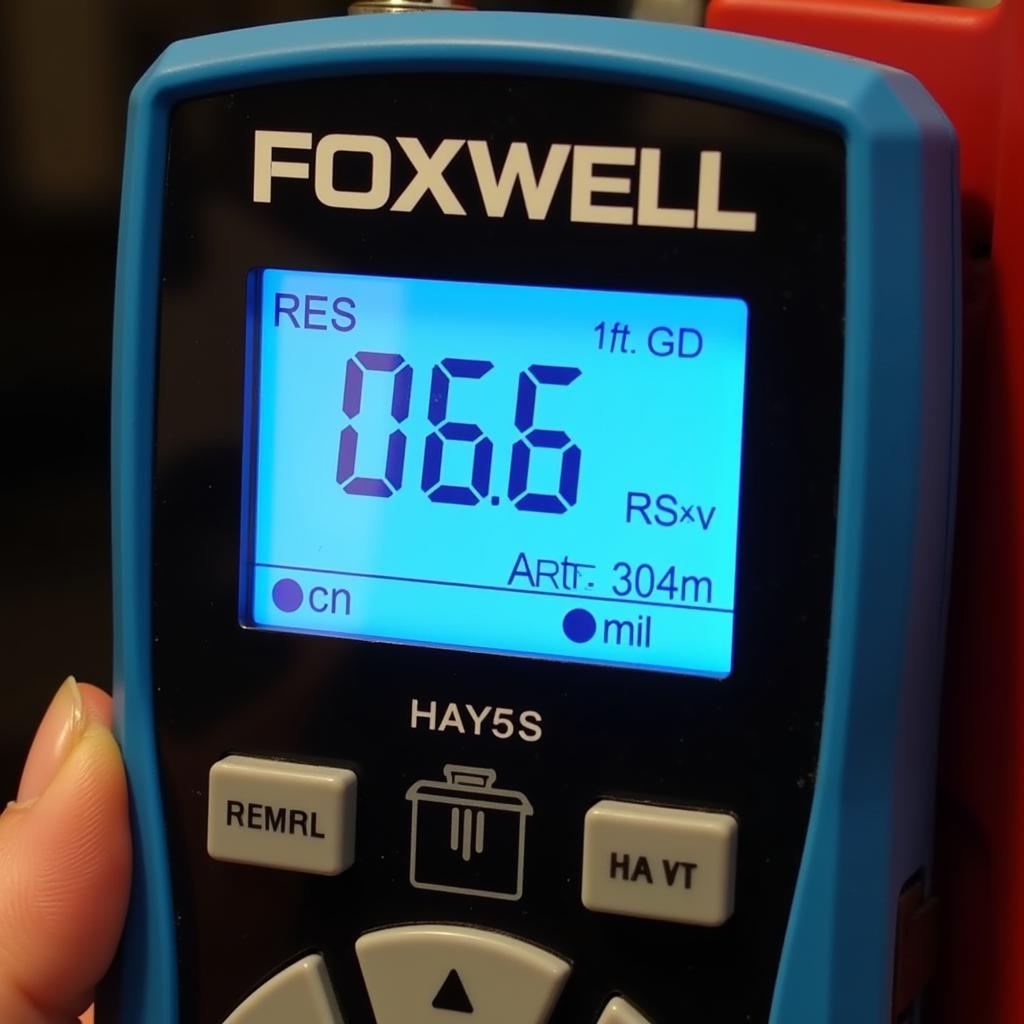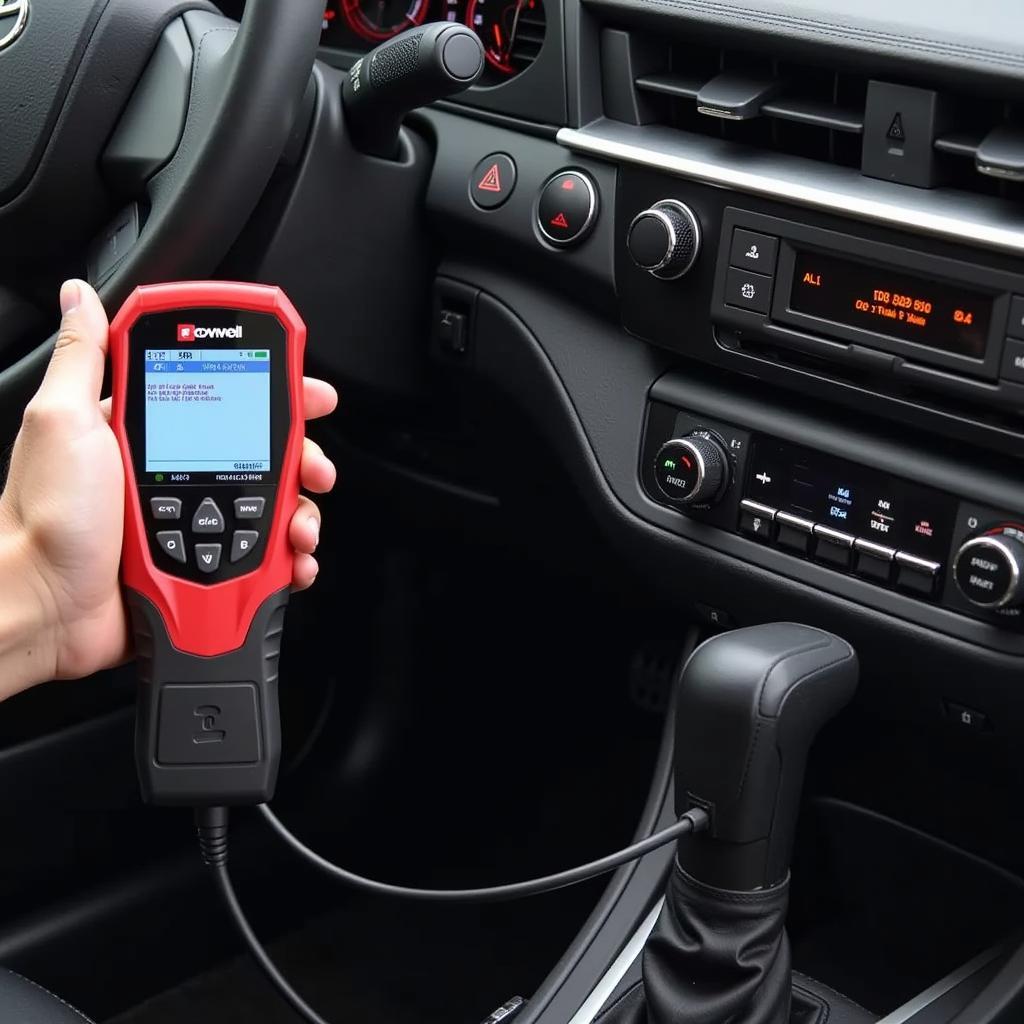If you’re troubleshooting a car battery, you might come across the term “RES number” on your FOXWELL battery tester. But what exactly does this number mean and how can it help you diagnose battery health? This comprehensive guide will delve into the meaning of the RES number on a FOXWELL battery tester and how it plays a crucial role in assessing your car battery’s condition.
What Does the RES Number Represent?
The RES number displayed on a FOXWELL battery tester stands for Internal Resistance, measured in milliohms (mΩ). This figure signifies the opposition to the flow of current within the battery. It’s a critical parameter reflecting a battery’s ability to deliver sufficient current for starting an engine and powering electrical components.
 FOXWELL Battery Tester Displaying RES Number
FOXWELL Battery Tester Displaying RES Number
Why is Internal Resistance Important?
Internal resistance is a key indicator of a battery’s overall health and performance. A low internal resistance generally indicates a healthy battery capable of delivering optimal current flow. Conversely, a high internal resistance suggests a problematic battery that might struggle to provide adequate power, especially during demanding situations like starting the engine in cold weather.
Several factors contribute to a battery’s internal resistance, including:
- Age: As batteries age, their internal resistance naturally increases due to the degradation of internal components.
- Temperature: Cold temperatures can significantly increase internal resistance, while warmer temperatures tend to lower it.
- Charge Level: A discharged battery typically exhibits higher internal resistance than a fully charged one.
- Construction and Chemistry: The materials used in a battery’s construction and its chemical composition also play a role in determining internal resistance.
Understanding these factors and how they influence internal resistance provides valuable insights into a battery’s overall health.
Interpreting the RES Number on your FOXWELL Battery Tester
FOXWELL battery testers, known for their accuracy and user-friendly interface, make it simple to interpret the RES number. Here’s a general guideline:
- Low RES Number (Below 5 mΩ): A low RES number generally indicates a healthy battery with low internal resistance, capable of delivering optimal current.
- Moderate RES Number (5-10 mΩ): A moderate RES number might suggest some level of degradation or a slightly aged battery. While the battery might still function, it’s essential to monitor its performance.
- High RES Number (Above 10 mΩ): A high RES number often signals a problematic battery with high internal resistance. This could be due to factors like old age, sulfation, or internal damage. Batteries with high RES numbers may struggle to provide sufficient power, leading to starting issues and other electrical problems.
“Always consult the manufacturer’s specifications for your specific battery model as acceptable RES numbers can vary,” advises John Miller, Senior Automotive Electrician at Miller Automotive Solutions. “This will give you a more precise understanding of your battery’s health.”
How to Improve Battery Health and Reduce Internal Resistance
While you can’t completely stop the natural aging process of a battery, several steps can help prolong its lifespan and maintain a healthy internal resistance:
- Keep the Battery Clean: Regularly clean the battery terminals and posts, removing any corrosion or dirt buildup.
- Maintain Proper Charge: Avoid deep discharging your battery and ensure it’s adequately charged, especially during periods of inactivity.
- Minimize Parasitic Drain: Identify and address any parasitic drains that might be slowly discharging the battery when the car is off.
- Drive Regularly: Regular driving, even for short periods, helps maintain the battery’s charge and prevent sulfation.
By following these practices, you can contribute to a longer lifespan and improved performance for your car battery.
Conclusion
Understanding the RES number displayed on your FOXWELL battery tester provides invaluable insights into your car battery’s internal resistance and overall health. By interpreting this number, you can proactively address potential battery issues, ensuring reliable starting power and optimal performance of your vehicle’s electrical system.
If you have any concerns about your car battery’s health or require assistance with battery testing and replacement, don’t hesitate to contact the experts at ScanToolUS at +1 (641) 206-8880 or visit our office at 1615 S Laramie Ave, Cicero, IL 60804, USA. Our team of experienced technicians is ready to assist you with all your automotive needs.


